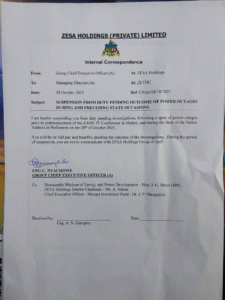ZIMBABWE’S TECHNOLOGICAL TIME TRAVEL: A THOUSAND YEARS BEHIND

In an era where digital transformation is reshaping the globe, Zimbabwe finds itself in a peculiar paradox, encapsulated by President Emmerson Mnangagwa’s recent admission. While visiting the Dubai Police General Headquarters in the United Arab Emirates, Mnangagwa encountered the future – artificial intelligence (AI) systems orchestrating police patrols with zero human intervention. His awe at Dubai’s technological strides was palpable, yet it was his subsequent remark that captured the essence of Zimbabwe’s plight: the nation, according to him, is “almost 1000 years behind in terms of technology” compared to Dubai.
This candid admission, albeit hyperbolic, starkly highlights Zimbabwe’s technological stagnation amidst a rapidly evolving digital landscape. The irony in Mnangagwa’s observation is profound, reflecting not just on his governance but on the broader state apparatus that has struggled to transcend its analogue foundations in a digital epoch.
Dubai’s technological oasis, brimming with AI and innovation, serves as a stark contrast to Zimbabwe’s current state. Across the globe, nations are harnessing AI to revolutionize both the public and private sectors, fundamentally altering life as we know it. Zimbabwe’s technological lag, as lamented by Mnangagwa, is not merely a matter of infrastructure but a reflection of deeper systemic issues.
Innovation, as history and evidence suggest, does not sprout in isolation nor can it be commanded into existence by legislative fiat. It thrives in environments where policy, incentives, and a culture of entrepreneurship converge to nurture creativity. Zimbabwe’s slow pace of technological advancement can be attributed to a confluence of factors: an environment that stifles innovation, repressive policies, a scarcity of skilled workers due to brain drain, and an education system that lacks focus on the sciences and research facilities.
Moreover, the absence of quality educational institutions, coupled with insufficient emphasis on science, technology, engineering, and mathematics (STEM) fields, hampers the development of a tech-savvy workforce. The dearth of research labs and scientific equipment, alongside the challenge of securing long-term financing and the tepid response from the private sector, further exacerbates the issue.
For Zimbabwe to embark on a journey of economic recovery and technological leapfrogging, a paradigm shift is essential. The government and industry leaders must collaborate to foster an environment conducive to innovation. This includes investing in education with a strong focus on STEM, promoting research and development, and providing incentives for entrepreneurs and innovators.
The path to technological parity with global standards is fraught with challenges, yet it remains within reach. By embracing smart solutions rooted in knowledge and innovation, Zimbabwe can gradually close the technological chasm that separates it from the likes of Dubai. This journey demands a collective effort, a vision for the future, and an unwavering commitment to transform the nation into a thriving digital economy.
As Zimbabwe contemplates its technological trajectory, the words of President Mnangagwa serve as a sobering reminder of the work that lies ahead. The nation’s potential for growth and innovation is boundless, yet unlocking this potential requires more than mere acknowledgment of the gap—it calls for decisive action, strategic planning, and a steadfast resolve to usher in a new era of technological advancement. In this quest, Zimbabwe has the opportunity not only to catch up with the digital age but to redefine its future on the global stage.




